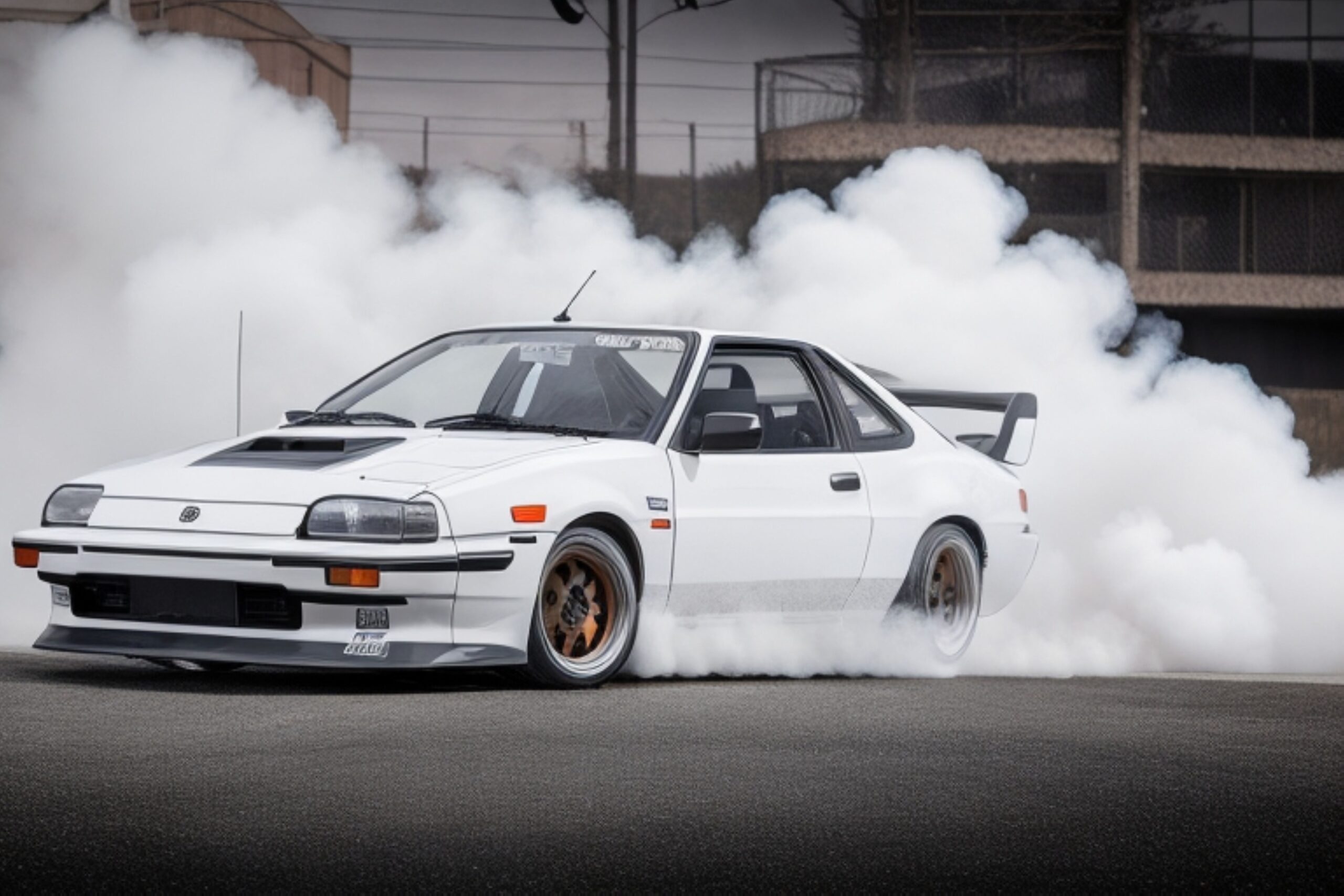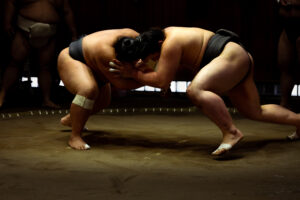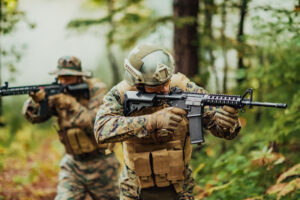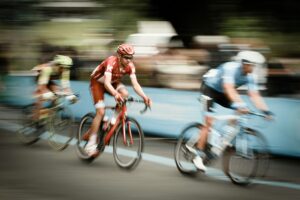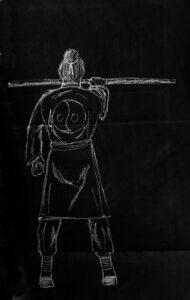Japan’s drift car culture has evolved into a vibrant phenomenon, captivating enthusiasts both locally and globally. With its roots in the mountainous roads of the country, drifting has become a staple of Japanese automotive culture, profoundly influencing street racing, motorsport events, and automotive tuning. This article delves deep into the intricacies of Japan’s drifting scene, exploring its rise, key players, events, communities, and its impact on the global stage.
The Rise of Drift Car Culture in Japan: An Overview
Drifting, which involves intentionally oversteering a vehicle while maintaining control, originated in Japan during the late 1970s and gained traction in the 1980s. It was initially popular among street racers navigating the winding mountain roads, known as "touge." As the sport grew in popularity, it attracted attention from both media and motorsport enthusiasts. By the 1990s, drifting was formalized into competitive events, culminating in official competitions like D1 Grand Prix.
The rise of drift culture was also influenced by the advent of specialized vehicles, such as the Nissan Silvia and Toyota AE86, which became icons of the scene. These cars, known for their lightweight frames and rear-wheel drive, offered the perfect platforms for drifting. The success of these vehicles contributed significantly to the burgeoning drift community, as enthusiasts sought to emulate the precision and style of professional drivers.
Media coverage played a pivotal role in propelling drifting into the mainstream. Films like "Initial D" popularized the lifestyle associated with drifting, showcasing the thrill and camaraderie of the sport. Video games further solidified its status, allowing fans worldwide to experience the adrenaline rush of sliding through corners virtually. This fusion of motorsport, media, and youth culture has cemented drifting as a significant aspect of Japan’s automotive identity.
The establishment of dedicated drift tracks across the country has also fueled the culture’s growth. Facilities such as Ebisu Circuit and Tsukuba Circuit became hotspots for both amateur and professional drifters. These tracks provided a safe environment for drivers to hone their skills, participate in competitions, and connect with fellow enthusiasts. As a result, drifting transitioned from illegal street racing to a legitimate motorsport, complete with sponsors and professional teams.
Today, Japan’s drift culture continues to thrive, characterized by a diverse community that spans across generations. The sport has seen a resurgence in popularity, especially among younger enthusiasts who are eager to learn the art of drifting. This renewed interest has led to the establishment of more events, workshops, and tuning shops, allowing aspiring drifters to engage with the culture in various ways.
In the global context, Japan remains the birthplace of drifting, influencing similar movements in countries like the United States and Australia. This interchange of ideas and styles has helped establish a rich tapestry of drift culture worldwide, while Japan remains the gold standard for enthusiasts seeking to experience the best of what drifting has to offer.
Key Players: Influential Drivers Shaping the Scene
In the world of Japanese drifting, several key figures have emerged as influential personalities, shaping the sport’s trajectory and inspiring countless newcomers to the scene. Ken Block, though not Japanese, has played a significant role in popularizing drifting globally, collaborating with Japanese drivers and showcasing the sport through his viral videos. His unique style and creativity brought attention to the drifting community, further amplifying its appeal.
Among Japanese drivers, names like Keiichi Tsuchiya stand out as pioneers. Known as the "Drift King," Tsuchiya is credited with bringing drifting into the mainstream through his participation in various competitions and appearances in automotive films. His skill behind the wheel and charismatic personality made him a beloved figure within the community, inspiring generations of drifters to follow in his footsteps.
Another key player is Daigo Saito, a professional drifter known for his aggressive driving style and remarkable achievements in competitive drifting. Saito has pushed the boundaries of the sport, consistently performing at the highest levels in events like Formula Drift Japan and D1 Grand Prix. His passion for drifting and relentless pursuit of perfection have made him a role model for aspiring drivers, showcasing the dedication required to succeed in the sport.
Masashi Yokoi, another prominent figure, has made significant contributions to the drift scene as a driver and team manager. He has been instrumental in nurturing young talent and promoting grassroots drifting through events and workshops. Yokoi’s commitment to supporting the next generation of drivers highlights the importance of community and mentorship within the drift culture.
The influence of these key players extends beyond the track. Many of them have embraced social media platforms, using them to share their experiences, connect with fans, and promote the sport. This visibility has helped cultivate a sense of community among drifters, encouraging enthusiasts to share tips, tricks, and footage of their own drifting exploits.
As the drift scene continues to evolve, new drivers are emerging, each bringing their unique style and approach to the sport. The legacy of those who came before them serves as a foundation upon which the next generation can build, ensuring that the spirit of drifting remains vibrant and dynamic.
Iconic Drift Events: Where the Action Takes Place
Japan is home to several iconic drift events that draw fans and drivers from around the world. One of the premier events is the D1 Grand Prix, established in 2001. This championship series features some of the best drifters in the world, competing on various tracks across Japan. The D1 Grand Prix has become synonymous with high-octane action, showcasing the best talent and innovation in drifting.
Another major event is the Formula Drift Japan series, which attracts international competitors. This series merges American-style drifting with the unique flair of Japanese culture, creating a thrilling spectacle for fans. The integration of both styles highlights the global nature of drifting while celebrating Japan’s rich heritage in motorsport.
Ebisu Circuit, located in Fukushima, is renowned for its drifting facilities, hosting events throughout the year. The circuit features multiple layouts, catering to various skill levels and styles of drifting. Ebisu’s popularity among both amateur and professional drivers has made it a must-visit destination for enthusiasts seeking to experience the essence of drifting in Japan.
The Tsukuba Circuit, another iconic venue, is famous for its time attack events. While primarily a time trial track, it often hosts drift events, attracting skilled drivers eager to showcase their abilities. The circuit’s tight corners and technical layout provide a challenging environment for drifters, pushing them to refine their skills and techniques.
In addition to these larger events, grassroots drifting meets occur regularly at local tracks. These gatherings provide an accessible platform for newcomers to test their skills and connect with the community. The informal nature of these meets fosters a sense of camaraderie, encouraging participants to share knowledge and techniques, which is essential for the growth of the drifting culture.
As drifting continues to evolve, new events are emerging, showcasing innovative formats and unique challenges. These events play a crucial role in keeping the culture alive, ensuring that the excitement and passion for drifting endure for future generations.
The Mechanics Behind Drift Cars: A Technical Insight
At the core of drift car culture lies an intricate understanding of vehicle dynamics and performance tuning. Drift cars are meticulously engineered to achieve the perfect balance between power, control, and agility. Rear-wheel-drive (RWD) vehicles are the preferred choice for drifting, as they allow drivers to initiate and maintain slides more effectively. This configuration enables weight transfer, crucial for achieving the desired oversteer.
Suspension setup is another critical aspect of drift car mechanics. Many drifters opt for aftermarket coilovers that allow for adjustable ride height and damping settings. This customization helps drivers fine-tune their vehicle’s handling characteristics, ensuring optimal performance during competitions and practice sessions. Camber angles, toe settings, and caster adjustments are also carefully calibrated to enhance grip and control while drifting.
Engine power plays a significant role in drift performance. Many drivers opt for turbocharged engines to maximize horsepower and torque. This added power enables drivers to initiate drifts more easily and maintain momentum through corners. Engine tuning, along with modifications such as improved cooling systems and exhaust upgrades, is essential for achieving the desired performance levels.
Tires are another critical factor in drifting. The right tire selection can significantly impact a car’s ability to slide and maintain control. Many drifters choose high-performance tires that provide a balance of grip and durability, allowing for prolonged sessions without sacrificing performance. Tire pressure adjustments can also influence how a car handles during a drift, with lower pressures often providing increased grip and flexibility.
Weight distribution is paramount in drift car design. Many drifters aim for a near-perfect 50/50 weight distribution to enhance balance and control during slides. This can involve relocating components like batteries or fuel tanks to optimize the car’s center of gravity. Lightweight materials, such as carbon fiber, are often used to reduce overall weight, enhancing agility and response.
Finally, the role of the driver cannot be overlooked. Mastering the mechanics of drifting requires a deep understanding of vehicle behavior and exceptional skill behind the wheel. Drivers must develop a keen sense of timing and precision, learning to read the car’s responses during high-speed maneuvers. This combination of technical knowledge and driving ability is what truly elevates a drift car to the next level.
From Tokyo to Yokohama: Drift Hotspots Explored
Japan is dotted with numerous drift hotspots, each offering a unique experience for enthusiasts and drivers alike. Tokyo, the bustling capital, is a hub for drifting culture. Many iconic locations, such as the Tokyo Bay area and the infamous Wangan highway, serve as popular spots for street drifting. The neon-lit streets and urban landscapes create an electrifying backdrop for drivers looking to showcase their skills.
Yokohama, located just south of Tokyo, is another vital area for drifting. The city hosts various drift events and gatherings, attracting both local drivers and tourists. The nearby Fuji Speedway is a well-known venue for formal competitions and practice sessions, providing a perfect setting for drifters to hone their craft. The combination of city streets and dedicated tracks creates a rich tapestry of drifting opportunities in the Yokohama area.
In addition to urban hotspots, rural areas also play a crucial role in Japan’s drift culture. The mountainous regions of Gunma Prefecture, for instance, are famous for their winding roads, attracting enthusiasts who seek the thrill of touge drifting. These mountain passes offer a challenging environment and a scenic backdrop, drawing drivers from across the country.
Ebisu Circuit, located in Fukushima, is another must-visit destination for drifters. Renowned for its multiple layouts and dedicated drift facilities, Ebisu has become a pilgrimage site for enthusiasts. The circuit hosts various events throughout the year, offering drivers a chance to push their limits and connect with the community. The unique atmosphere at Ebisu, characterized by camaraderie and shared passion, makes it an essential part of Japan’s drift culture.
Tsukuba Circuit, located in Ibaraki Prefecture, is famous for its technical layout and time attack events. While primarily focused on time trials, it regularly hosts drift events, attracting skilled drivers eager to test their abilities. The tight corners and elevation changes at Tsukuba create an exciting challenge for drifters, pushing them to refine their technique and improve their performance.
As drift culture continues to expand, new hotspots are emerging across Japan. Local communities are organizing events and gatherings, creating opportunities for newcomers to engage with the sport. The diverse landscape of Japan offers a wealth of options for enthusiasts, ensuring that the thrill of drifting remains accessible and vibrant for all.
The Role of Communities: Bonds Forged Through Drifting
At the heart of Japan’s drift culture lies a strong sense of community, where enthusiasts come together to share their passion for drifting. This communal aspect has been pivotal in nurturing the sport, fostering connections that extend beyond the track. Whether through informal meetups or organized events, the bonds formed among drifters create a supportive and inclusive environment.
Local clubs and teams play a significant role in the drift community. These organizations often host events, workshops, and practice sessions, providing a platform for novice drivers to learn from experienced practitioners. This mentorship aspect is crucial for maintaining the culture, as seasoned drivers pass on their knowledge and skills to the next generation.
Social media has revolutionized how drifters connect and share their experiences. Platforms like Instagram and YouTube allow enthusiasts to showcase their cars, share drifting videos, and connect with like-minded individuals worldwide. This online presence has expanded the reach of Japan’s drift culture, enabling international enthusiasts to engage with Japanese drivers and events, fostering a sense of global camaraderie.
Moreover, drifting events often transcend competition, becoming social gatherings where friendships are forged. Drivers, mechanics, and fans alike share stories, tips, and experiences, creating a supportive network. These connections can lead to collaborations on car builds, shared resources, and even lifelong friendships that stem from a shared passion for drifting.
The community aspect of drifting also extends to car shows and exhibitions, where enthusiasts showcase their builds and modifications. These events provide opportunities for drivers to receive feedback, gain inspiration, and celebrate their achievements together. The collective celebration of skill and creativity reinforces the bonds within the community, making drifting more than just a sport—it’s a lifestyle.
As the drift culture grows, the importance of community remains paramount. Newcomers are welcomed with open arms, and the collective enthusiasm ensures that the spirit of drifting continues to thrive. This sense of belonging and shared passion is what makes Japan’s drift culture enduring and vibrant.
Drift Tuning: The Art of Perfecting Performance
Drift tuning is a critical component of creating a competitive drift car, and it encompasses a range of modifications aimed at enhancing performance and handling. The process often begins with selecting the right base vehicle, with popular choices including the Nissan Silvia, Toyota AE86, and Mazda RX-7. These cars are favored for their lightweight design and rear-wheel-drive configuration, which are ideal for drifting.
The first step in the tuning process usually involves suspension upgrades. Aftermarket coilover systems allow drivers to adjust ride height, damping, and stiffness. This level of customization is essential for achieving the desired handling characteristics, as drifting requires a delicate balance between grip and oversteer. Additionally, adjustable arms and sway bars can be installed to fine-tune alignment settings and roll stiffness, further enhancing performance on the track.
Engine modifications are another crucial aspect of drift tuning. Many drifters opt for turbocharged setups to increase horsepower and torque, allowing for quicker initiation of drifts. Upgrades such as performance exhaust systems, intercoolers, and engine management systems are commonly implemented to maximize power output and responsiveness. A well-tuned engine provides the necessary thrust to maintain speed during drifts and smoothly transition between maneuvers.
Tires play a significant role in drift performance, and selecting the right compound is essential. Drifters often choose tires that provide a balance of grip and durability, enabling them to slide effectively while also withstanding the rigors of extended drifting sessions. Tire pressure adjustments can also optimize performance, as lower pressures typically enhance grip and flexibility during slides.
Braking systems are also critical in drift tuning. Upgrading to larger rotors and performance brake pads ensures consistent stopping power and heat dissipation during intense driving. Many drifters opt for hydraulic handbrakes, which allow for quick and precise initiation of drifts, making them a valuable asset during competitions.
Finally, aesthetics are also an important consideration in drift tuning. Custom body kits, paint jobs, and graphics allow drivers to express their personality and style. While aesthetics may not directly impact performance, they play a significant role in the overall drift culture, contributing to the visual spectacle of events and exhibitions. The combination of performance tuning and personal expression makes drift cars unique, embodying the spirit of the sport.
Women in Drifting: Breaking Barriers and Stereotypes
In recent years, the presence of women in the drift scene has been steadily increasing, challenging stereotypes and breaking barriers within a traditionally male-dominated sport. Female drivers have begun to carve their niche in drifting, showcasing their skills and proving that passion and talent are not confined to gender. This shift is gradually changing perceptions and encouraging more women to engage with the drift community.
One notable figure is Masami Kageyama, a professional drifter known for her impressive skills and competitive accomplishments. Kageyama has become a role model for aspiring female drivers, inspiring others to pursue their drifting dreams. Her participation in various competitions has demonstrated that women can excel in motorsport, challenging the notion that drifting is solely a male pursuit.
Social media has played a significant role in amplifying the voices of female drifters. Platforms like Instagram and YouTube allow women to showcase their builds, driving skills, and experiences, fostering a sense of community and support. This visibility has not only encouraged more women to take up drifting but has also attracted attention from sponsors and the media, further legitimizing their presence in the sport.
Drifting events and organizations are increasingly recognizing the importance of inclusivity. Many competitions offer classes or categories specifically for female drivers, promoting their participation and providing a platform for them to compete. These initiatives help to cultivate an environment where women feel welcome and empowered to showcase their talents.
Moreover, female enthusiasts are making their mark on the technical side of drifting. Mechanics, tuners, and engineers are emerging from the female demographic, contributing to vehicle builds and performance enhancements. This diversification of roles within the drift community challenges traditional gender norms, showcasing the multifaceted nature of the sport.
As the drift culture continues to evolve, the increasing presence of women is reshaping the landscape. By breaking down barriers and stereotypes, female drivers are paving the way for future generations to participate in drifting. Their contributions not only enhance the diversity of the sport but also inspire others to embrace their passions, regardless of gender.
Drift Films and Media: Capturing the Thrill and Skill
The relationship between drifting and media has been a driving force in popularizing the sport, with films, documentaries, and online content capturing the excitement and skill of drifting. Movies like "Initial D" and "Fast & Furious: Tokyo Drift" have introduced drifting to mainstream audiences, showcasing the adrenaline-fueled action and the culture surrounding it. These films have not only entertained but have also inspired countless individuals to explore the world of drifting.
Documentaries focusing on the lives of professional drifters offer an in-depth look at the dedication and passion required to succeed in the sport. Films like "Drift" and "The Art of Drift" highlight the challenges, triumphs, and struggles of drivers, providing a personal perspective that resonates with fans. By showcasing the human side of drifting, these documentaries foster a deeper connection between the audience and the sport.
In addition to traditional media, the rise of social media platforms has transformed how drifting is documented and shared. YouTube has become a treasure trove for drift enthusiasts, with channels dedicated to car builds, drifting tutorials, and event coverage. Influencers and content creators capture the exhilarating moments of drifting, allowing audiences to experience the thrill alongside the drivers. This accessibility has attracted new fans and fostered a global community of drifting enthusiasts.
Video games have also contributed to the popularity of drifting, with titles like "Forza Motorsport" and "Need for Speed" allowing players to experience the sport virtually. These games provide an opportunity for players to learn drifting techniques, explore various cars, and participate in virtual competitions. The gaming aspect introduces drifting to a younger audience, further expanding its reach and influence.
Event coverage through live streaming and social media broadcasts has become increasingly common, allowing fans to witness competitions in real-time. This accessibility enables a broader audience to engage with the sport, fostering a sense of community among viewers and participants alike. Live coverage not only enhances the spectator experience but also attracts sponsors and media attention, contributing to the growth of the drifting scene.
As drifting continues to evolve, media will remain a critical aspect of its culture. The interplay between film, social media, and live events will shape the future of drifting, ensuring that its excitement and spirit are captured and shared with enthusiasts worldwide. This symbiotic relationship between drifting and media will continue to drive the sport forward, inspiring new generations to embrace the thrill of sliding sideways.
